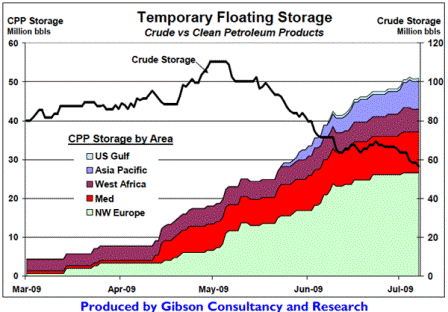Looks like the temporary storage is moving into likely cheaper land based storage.
And much is probably already sold forward into the contango, as forward buying causes spreads to widen to the point where someone buys it spot and sells it forward for enough of a markup to cover storage costs and provide a desired return on capital.
By setting price and letting quantity pumped adjust, the Saudis/OPEC provide an incentive not to store crude and over time that policy should cause the contango to move to backwardation.
On the other side, passive commodity strategies by investors do the reverse, so at the moment it looks like they are in control.
There is a kind of oceanic traffic jam out there among very large crude carriers (VLCCs), with something like 7% (according to Lloyd’s) of them storing crude oil off the coast of Europe, Asia, or North America in anticipation of higher prices later this year. Such are the joys of contango — higher forward prices making it profitable to store petroleum for future sale — but it is a huge gamble. If the people contracting for such VLCCs are wrong, their carrying costs mount and it becomes likely that they just dumb the product on the markets, further depressing prices.
Check the following figure (from EA Gibson) of the current storage situation for both petroleum and clean products, like gasoil:. While crude sea storage has declined from its peak earlier this year, clean products are floating out there is ever larger amounts.
[top]


